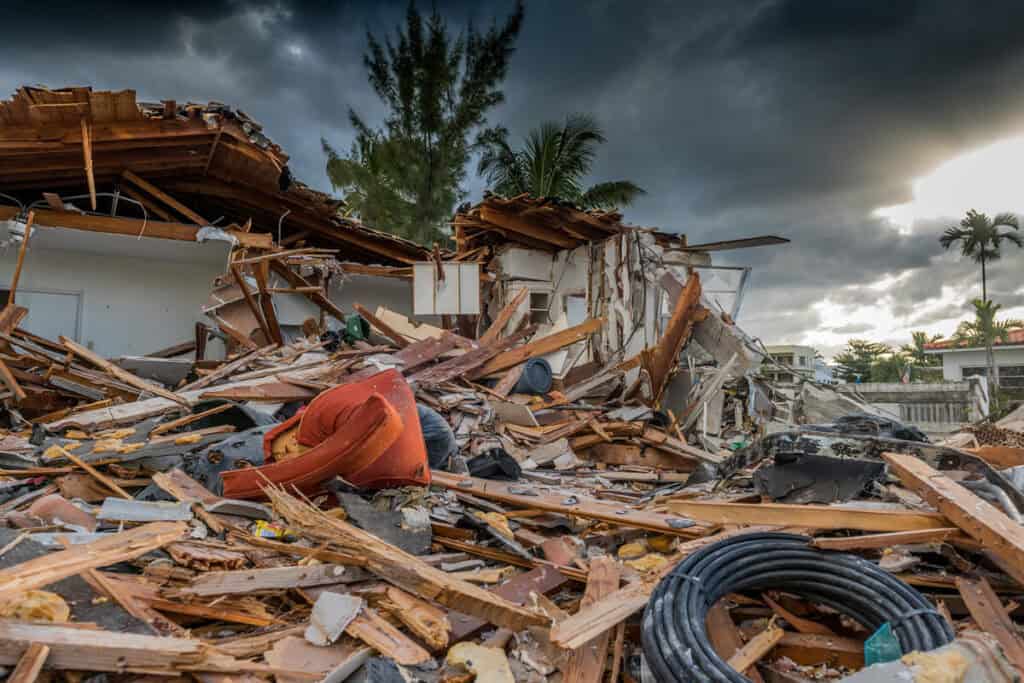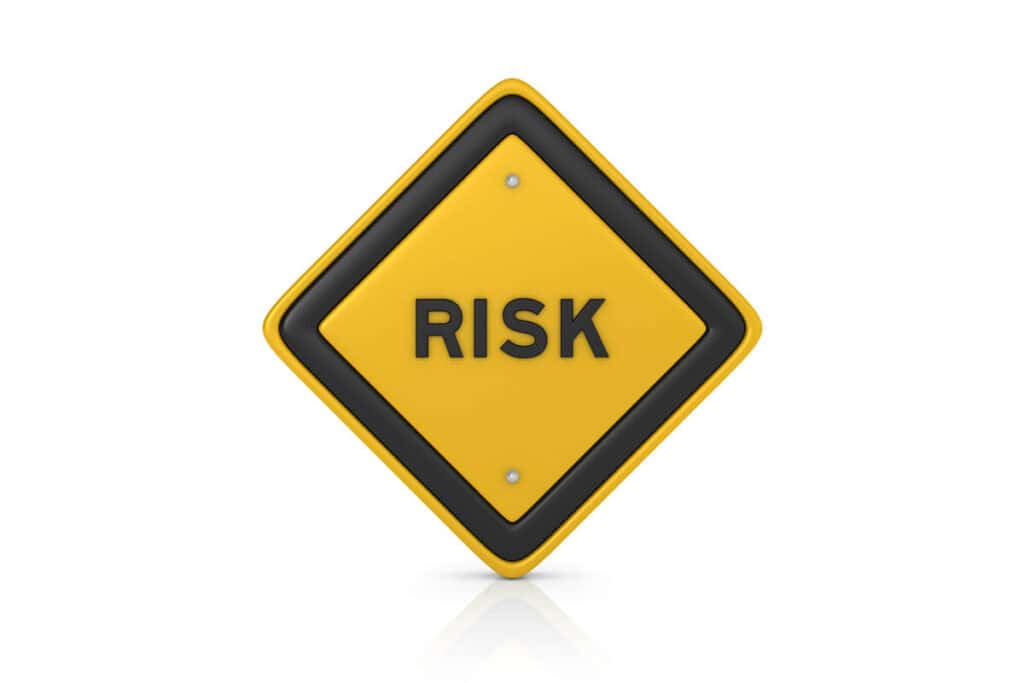Key Highlights
- Understanding the difference between Business Continuity and Disaster Recovery is critical for the survival of every organization
- Comprehensive and tested business continuity (BC) and disaster recovery (DR) plans are essential to minimize the impact of disruptions on any organization.
- A Business Continuity Plan (BCP) focuses on returning to normal business operations in the event of major disruption to the functions of an organisation, irrespective of the cause.
- A Disaster Recovery Plan (DRP) specifically focuses on recovering IT systems and data after a disaster.
- Business continuity and disaster recovery (BCDR) plans work together to ensure resilience by defining what should be done when an event occurs.
- BCDR plans help organizations reduce downtime, minimize the impact of unwanted disruption, and reduce financial risk (according to IBM’s Cost of Data Breach Report, the global data breach average cost was USD 4.45 million in 2023).
- Testing and maintaining BCDR plans is crucial to ensure their effectiveness, including updating to reflect organizational changes and emerging technologies.
- Business continuity is globally recognised as a profession . The Business Continuity Institute is just one global organization that promotes best practice in BCDR www.thebci.org
Table of Contents
ToggleWhy Is Knowing The Difference Between Business Continuity and Disaster Recovery Important?
If events outside your control stop your business operations, will you be prepared? Surprises including pandemics, wars, severe weather, IT failures and cyber attacks have harmed many organizations across the globe, some fatally.
The ones who were prepared, and who knew about the difference between business continuity and disaster recovery, kept their competitive advantage and protected their reputation. They were able to continue their critical business functions, minimizing the impact on customers, employees, and stakeholders.

If you want your company to survive when the unexpected happens, then understanding the difference between business continuity and disaster recovery is an important first step. So please read on if you want to more more about what business continuity (BC) and disaster recovery (DR) are, how they differ, and how they can protect your business.

In this blog, I will:
- Look at the definitions and difference between disaster recovery and business continuity.
- Explore how a business continuity strategy can help you survive.
- Uncover the relationships between BC and DR.
- Highlight some common misconceptions.
- Describe the key elements of BC plans and DR plans.
- Provide tips on how to test and maintain business continuity and disaster recovery plans.
What Is The Difference Between Business Continuity and Disaster Recovery?

The first thing to understand is that BC and DR are not the same thing, and they are not independent. DR should be a subset of a wider BC strategy, with DR concerning itself with just IT related matters, and BC with everything else where an organization needs continuity.
Understanding the difference between business continuity and disaster recovery is an important stage in BCDR planning.
A Definition of Business Continuity
BC refers to the strategic, tactical, and operational capability of an organization to plan for and respond to incidents and business disruptions in order to continue business operations at an acceptable predefined level.
A business continuity plan provides the processes, policies, procedures and organizational structure that an organization will use to return to normal business functions in the event of a disaster.

A Definition of Disaster Recovery
Disaster recovery focuses on the recovery of an organization’s IT infrastructure, data, and applications after a disaster or unexpected outage.
A disaster recovery plan includes the related processes, policies, and procedures enabling the recovery or continuation of IT systems.

What is a Disaster?
Disasters can range from natural events including earthquakes and floods, technical incidents that cause IT system outages, and human-made incidents like cyberattacks and malicious acts by employees.
Disasters aren’t restricted to widespread cataclysmic events like wars and and a natural disaster like a storm. The disruptive event itself can be minor, including local power outages because somebody flipped the wrong switch. The key is the impact that it has on regular operations.
Examples of a disaster include:
- A crash on the highway that prevents key employees getting to the office
- A leak in a roof that floods the datacenter
- A network router burnout
- A sacked employee who deletes vital data on their last day
While you should be able to build a list of what disasters could effect your operations, you can’t predict when they will happen.

How BC and DR Complement Each Other in Risk Management
While there is a difference between business continuity and disaster recovery in terms of focus, the plans for each complement each other by concentrating on different aspects of disruption and recovery.
Creating a business continuity strategy which defines a consistent risk management approach for both BC and DR is important. It helps everyone realise that, when it comes to risk management, there is no difference between business continuity and disaster recovery.
This holistic approach for BCDR strategies provides comprehensive mitigation against risks to business resilience, covering both operational and IT aspects of the organization.

What Are Common Misconceptions About DR and BC?
There are several common misconceptions surrounding BC and DR that need to be addressed.
In my experience, the most common misconception is that there is no difference between business continuity and disaster recovery. A good illustration of this is believing that taking IT data backups is all you need for effective BCDR. Backups manage just one of the plethora of risks to continuity.
Another misconception is that BCDR plans are only necessary for large organizations. In reality, organizations of all sizes benefit from having BC and DR plans in place. Small businesses are especially vulnerable to the impact of disruptions, BCDR can help them minimize the damage. For small organizations, one difference between business continuity and disaster recovery is that the strategies can be combined into a single document.

How to Build a Business Continuity Plan
Building a BC plan involves identifying potential risks, assessing their impacts, identifying critical business functions, and developing strategies to mitigate the risks and ensure the continuity of essential business operations. The high-level steps are pretty much the same as building a DR plan.
- The first step is identifying and prioritising all risks that could impact normal business operations. This includes all threats to continuity, including natural, technical and human. The risks should be prioritised based on likelihood and impact.
- Next conduct a business impact analysis (BIA) to identify critical business functions.
- Then develop response strategies and plans for each function.
- Roles and responsibilities should then be clearly defined.
- The plans should then be tested, followed by training and communication.

Conducting a Business Impact Analysis
Conducting a business impact analysis (BIA) is critical to effective BC. Every part of the organization must be analyzed to identify the critical business functions, the ones that must operate to provide essential services.
For example, while payroll is important, most organizations could continue to do business if the payroll couldn’t operate for a time. For a sales organization, the ability for customers to place orders is critical.
A BIA will identify the functions and assess their priority. It should also document the maximum downtime for the function before harm occurs. A BIA should also assess the dependencies between different business functions, and discover what are critical resources, staff, and IT for the function to operate.
Developing and Implementing Response Strategies
When a crisis happens, response/recovery strategies play a pivotal role in ensuring a swift recovery. These strategies are the backbone of a robust BC plan. For each function, the Recovery Time Objective (RTO) and Recovery Point Objective (RPO) need to be defined,, as these will guide the detail of a suitable response strategies.
RPO defines how much data the company can afford to lose after a disaster strikes. RTO is the length of time that the function can be out of action without causing significant harm to the organization.
Response strategies should be developed for each function that can meet both RPO and RTO targets, such as alternative sites, data backups, and manual working approaches. For example, consider an airport check-in desk: If the IT systems fail, they have 15 minutes before major queues develop – so the RTO is 15 minutes.
Assigning Roles and Responsibilities in BCDR Plans
When a disaster strikes, knowing who is going to do what is crucial. Well defined roles and responsibilities will ensure that everyone has a clear understanding of who does what during a crisis. Here are some examples:
- A business continuity manager who oversees the entire process of developing, implementing, testing, and maintaining the BC strategy and plan.
- A crisis management team, sometimes known as a Red team, with members from top-level management. They decide if the BC Plan should be invoked, then take critical decisions on matters that could impact the viability and reputation of the organization.
- Business leaders should appoint specific individuals to liaise with third parties during a disaster.
- Communication specialists handle the dissemination of crucial information, maintaining transparency for stakeholders.
Every team member should be aware of their responsibilities, ensuring a coordinated response in the face of adversity. Effective role assignments streamline decision-making and facilitate a swift recovery process.
Key Elements of a DR plan
Disaster recovery planning is crucial to ensure that organizations can quickly recover their IT systems and critical data in the event of a disaster. By having a well-defined disaster recovery plan in place, organizations can minimize downtime, reduce financial losses, and maintain customer trust even in the face of unforeseen events.
A disaster recovery plan outlines the steps and procedures to be followed to restore IT systems, applications, and data after a disruption. This is a key difference between business continuity and disaster recovery plans, as BC plans do not cover IT restoration.

A DR plan includes strategies for data backup, system recovery, and the allocation of resources to minimize downtime. A robust plan ensures that critical systems are restored in a timely manner, minimizing the impact on business operations, reducing the risk of data loss, and meeting the defined RTOs and RPOs. It also considers potential risks and vulnerabilities, allowing organizations to proactively prepare for and respond to potential disasters.
A well-designed disaster recovery plan (DRP) includes several key elements that are crucial for the protection and recovery of IT systems and critical data. These elements include:
- Disaster recovery team: This team consists of individuals responsible for executing the DR plan and coordinating the recovery process. They should have clear roles and responsibilities assigned to them.
- Data center: The DR plan should identify a secure location, such as a secondary data center or a cloud-based infrastructure, where critical IT systems and data can be replicated and stored.
- IT infrastructure: The plan should outline the necessary hardware, software, and network infrastructure required for the recovery process. This includes backup systems, recovery tools, and communication channels.
- Recovery procedures: All steps required to recover IT systems and data must be clearly and comprehensively documented, to a level where they can be followed by any member of IT.
By ensuring these key elements are included in the DR plan, organizations can enhance their ability to recover from a disaster and minimize the impact on their operations and data.
Prioritizing IT Systems Recovery
One of the key elements of a disaster recovery plan is prioritizing the recovery of IT systems and associated data. Not all systems and data hold the same level of importance for an organization, and prioritizing their recovery ensures that essential operations can be resumed quickly.
The BIA carried out when creating the BC plan will inform IT about which systems are a priority for recovery. During the recovery process, IT resources should concentrate on restoring the critical data and IT systems first. This will minimize operational downtime and ensure the continuity of essential business functions.
Inventory Management and Asset Protection Strategies
When it comes to inventory management and asset protection, there is no difference between business continuity and disaster recovery. All types of assets have to be considered, not just IT equipment.
Effective inventory management and asset protection strategies are essential components of good BCDR plans. These strategies ensure that organizations can quickly identify and recover their critical assets and data in the event of a disaster.
Inventory management involves maintaining an accurate record of all assets, including hardware, software, telephony, people, locations, and all other resources that are essential for business operations.
Asset protection strategies aim to safeguard critical assets from potential risks and threats. This includes implementing security measures such as access controls, physical security, encryption, and regular backups to prevent data loss or unauthorized access.
DR Role Assignments and Responsibility Frameworks
Role assignments and responsibility frameworks are crucial aspects of a well-defined disaster recovery plan. Clearly defining roles and responsibilities ensures that each team member understands their specific tasks and responsibilities during the recovery process. This ensures effective coordination and collaboration, eliminates confusion, and expedites the restoration of critical systems and data.
The DRP should clearly identify the team members involved in the recovery efforts and their roles. This includes designating a disaster recovery coordinator who will oversee the entire recovery process and coordinate the activities of the recovery team.
Responsibility frameworks outline the specific tasks and actions that each team member is responsible for during the recovery process. This includes communication protocols, decision-making authority, and escalation procedures.
Testing and Maintaining BC and DR Plans
For plan testing, there is no difference between business continuity and disaster recovery.
Testing and maintaining BCDR plans is critical to their effectiveness and reliability. Testing should not be considered as one-time efforts but rather ongoing activities require regular execution, updating, and refinement.
Regular testing of BC and DR plans helps identify any weaknesses or gaps in the plans and allows organizations to make necessary improvements.
For plan maintenance, there is also no difference between business continuity and disaster recovery – both sets of plans must reflect the current technical and organizational landscapes.
Organizations should regularly review and update their BC and DR plans to reflect organizational changes, technology updates, process amendments, and lessons learned from previous incidents.
By keeping these plans up to date, organizations can ensure that they remain relevant and effective in mitigating risks and responding to disruptions.
Schedule and Execute Regular Testing
Regular testing of business continuity and disaster recovery plans is crucial to ensure their effectiveness and reliability. Testing allows organizations to identify any weaknesses or gaps in the plans and make necessary improvements before a real disaster occurs.
Organizations should schedule regular testing sessions for their BC and DR plans, including tabletop simulations, tabletop exercises, and full-scale drills. These tests should simulate different disaster scenarios to evaluate the response and recovery capabilities of the plans. Testing should involve all relevant stakeholders, including IT teams, business leaders, and key personnel.
During the testing, any issues or challenges encountered should be fully documented and used to make necessary updates and improvements to the BC and DR plans. The plans should be tested again once the updates have been made.
Maintaining Plans
Updating business continuity and disaster recovery plans to reflect changes and experience is vital to their effectiveness and relevance.
Organizational changes can include mergers and acquisitions, changes in business processes, function structure, or the implementation of new systems or technologies. These changes can impact the organization’s risk landscape and require updates to the BC and DR plans to ensure they remain effective.
The introduction of new technologies (such as cloud computing, IoT, artificial intelligence and automation) and the emergence of new threats (such as pandemics, cyberattacks, and civil unrest) can introduce new risks and vulnerabilities that need to be addressed in the BC and DR plans.
Conclusion
To conclude, understanding the difference between Business Continuity and Disaster Recovery is crucial for every organization. Both BC and DR plans are essential for effective risk management, with each playing a unique role in ensuring organizational resilience. Clear communication, regular testing, and adaptability to organizational changes are key to maintaining effective BC and DR strategies. Prioritizing IT recovery, asset protection, and role assignments are vital components of a robust disaster recovery plan. By investing in comprehensive BC and DR initiatives, businesses across industries can mitigate risks and safeguard operations for long-term success.
Frequently Asked Questions
What Are The Most Common Challenges in Implementing BCDR Plans?
- Common challenges when implementing business continuity and disaster recovery plans include: confusion over the difference between business continuity and disaster recovery
- lack of executive buy-in
- limited resources
- undefined scope
- insufficient understanding of risks
- resistance to change.
Proactive strategies such as stakeholder engagement, regular training, and awareness programs can help overcome these challenges.
How Often Should BCDR Plans Be Tested and Updated?
BC and DR plans should be tested and updated regularly to ensure their effectiveness. The precise frequency depends on several factors, including the organization’s risk assessment, changes in the business environment, and emerging technologies. Generally, it is recommended to review and test BC and DR plans at least annually, whenever there are significant changes in the organization or technology, when the plans have been amended, or when the invocation of BCDR has highlighted weaknesses.
Can Small Businesses Afford BCDR plans?
Small businesses may have concerns about the affordability of comprehensive business continuity and disaster recovery plans. However, the cost of a disaster is likely to be can be much higher than putting the plans in place. As I said earlier, disasters can be caused by a minor event, such as a power surge destroying all PCs.
Small businesses can tailor their BC and DR plans to their specific needs, prioritizing critical functions to ensure cost-effectiveness while still maintaining a level of preparedness.
How Do BCDR Plans Differ For Service vs. Manufacturing Industries?
The difference in business continuity and disaster recovery planning for service industries and manufacturing industries lies in their specific needs and dependencies. While service industries may focus more when business continuity planning on customer facing functions and data protection, manufacturing industries may prioritize supply chain continuity and inventory management.
What Role Does Technology Play in Enhancing BCDR?
Technology plays a useful role in enhancing business continuity and disaster recovery efforts. It enables organizations to automate backup and recovery processes, implement real-time monitoring and alert systems, and leverage cloud-based solutions for off-site data storage, application provision, and system resilience. Technology also enables faster recovery times and improves overall efficiency in plan execution.
How Can Organizations Measure The Effectiveness of Their BCDR Plans?
Organizations can measure the effectiveness of their business continuity (BC) and disaster recovery (DR) plans by assessing their ability to respond and recover from disruptions. Key metrics to consider include recovery time objectives (RTOs), recovery point objectives (RPOs), and the organization’s ability to maintain critical business functions during a disruption. Regular testing, drills, and incident reporting can provide valuable insights into the effectiveness of BC and DR strategies.




